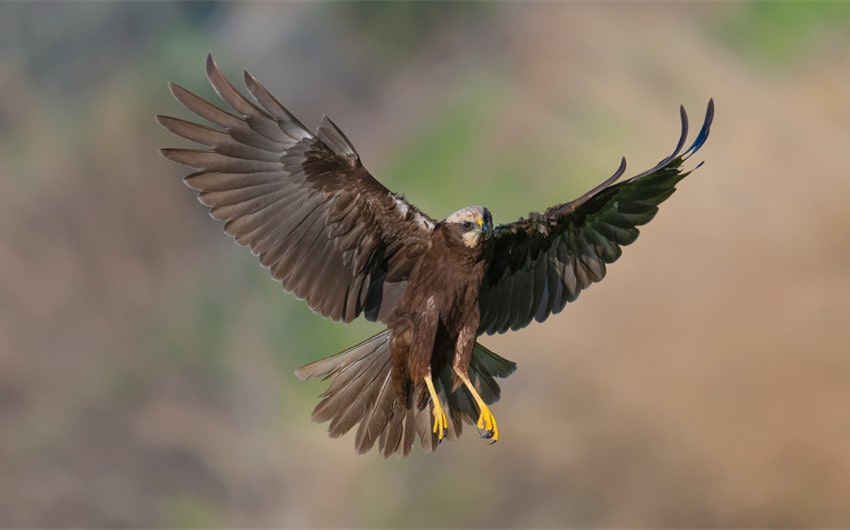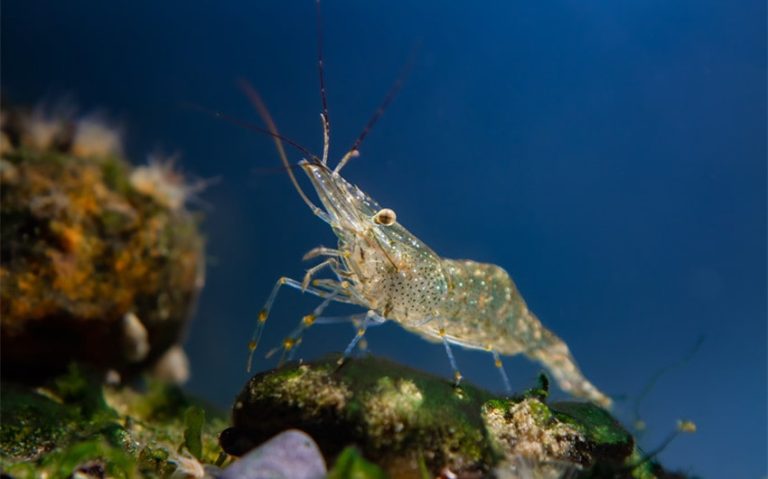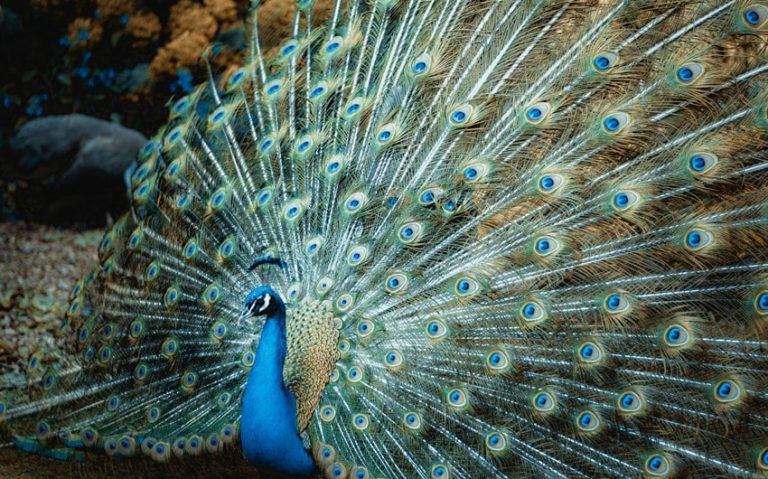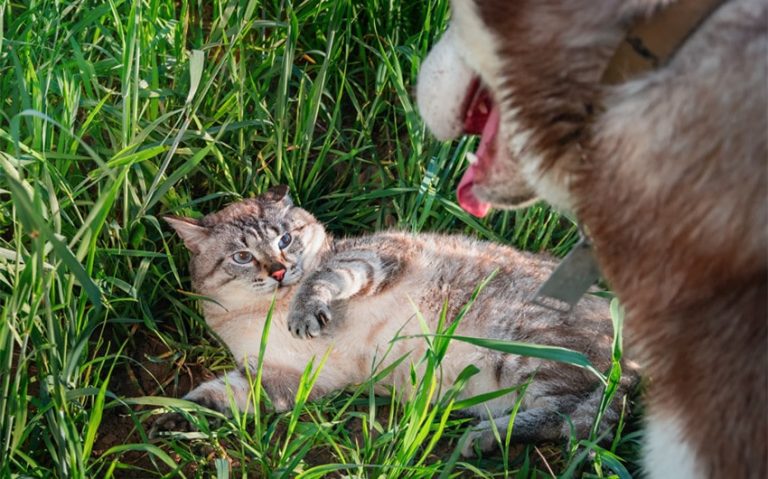What Eats Hawks: 15 Predators That Threaten These Birds
Hawks are known for their sharp vision and hunting prowess, often dominating the skies as top predators. However, like all creatures, they too can fall prey under certain conditions, especially when they’re young or vulnerable. What eats hawks may surprise you, as these powerful birds aren’t easy targets.
From larger birds of prey to stealthy land predators and even humans, hawks face unique threats that remind us of nature’s complex food chain. In this article, we’ll explore the animals that prey on hawks, uncovering how these interactions shape ecosystems and keep nature in balance.
Factors that Make Hawks Vulnerable to Predators
- Age and Size: Young hawks (nestlings and fledglings) lack the strength, speed, and defensive skills of adults, making them easy targets for predators.
- Injury or Illness: Injured or sick hawks struggle to fly or defend themselves, increasing their vulnerability to ground-based and airborne predators.
- Habitat and Environment: Nesting sites close to the ground or in areas with dense predator populations expose hawks to greater risk, especially in open or fragmented habitats.
- Human Interference: Activities like deforestation or construction can disrupt hawk habitats, making them more susceptible to predation due to loss of cover or suitable nesting areas.
Common Predators of Hawks
While hawks are powerful predators themselves, they are not immune to being preyed upon, particularly in vulnerable stages like infancy, injury, or illness. Below is an in-depth look at the common predators of hawks, from other formidable birds of prey to terrestrial and reptilian threats.
Larger Birds of Prey
1. Great Horned Owls
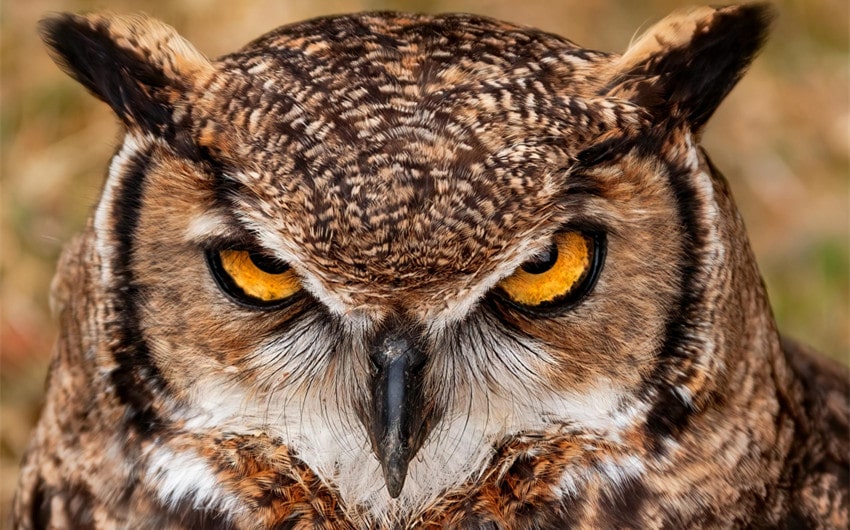
As one of the most adaptable and powerful nocturnal hunters, great horned owls often target young or smaller hawk species. These owls, with their silent flight and powerful talons, can ambush roosting hawks during nighttime hours. Their excellent night vision and patience allow them to catch hawks unaware, particularly young or weakened individuals.
2. Golden Eagles
Known for their agility and strength, golden eagles sometimes prey on hawks, especially in situations of food scarcity or territorial disputes. With a wingspan of up to seven feet, golden eagles are capable of overpowering hawks mid-air or during a struggle over food. They typically target smaller hawk species, especially in open terrains where visibility allows for surprise attacks.
3. Bald Eagles
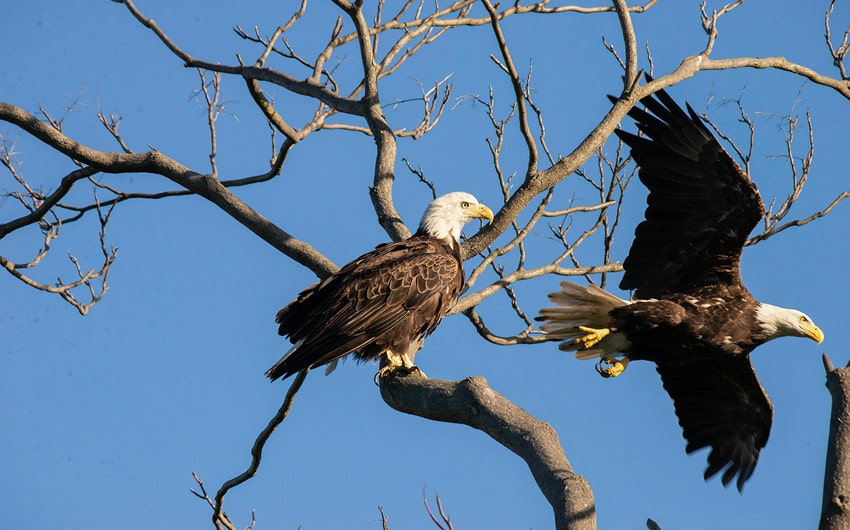
These large and territorial birds of prey occasionally prey on hawks, especially during the nesting season when competition for territory and resources is high. Bald eagles may also take over hawk nests, especially in environments where suitable nesting spots are limited. With their impressive size and strength, bald eagles are formidable adversaries in disputes with hawks.
4. Red-Tailed Hawks
Although red-tailed hawks and other hawk species often coexist peacefully, larger red-tailed hawks have been known to attack smaller hawk species when resources are scarce or if territories overlap. These encounters typically occur over food disputes or when one hawk feels its territory is threatened, potentially leading to serious conflict.
5. Peregrine Falcons
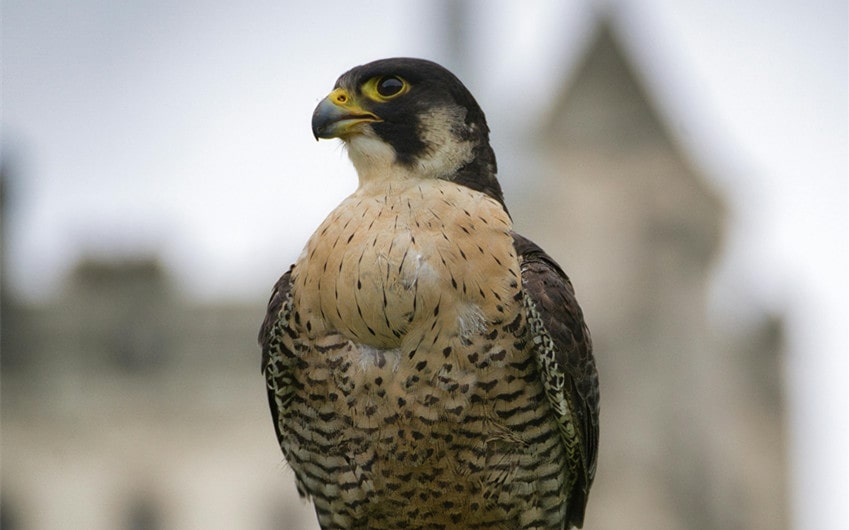
Peregrine falcons are known for their speed and agility, particularly in urban areas where both falcons and hawks compete for similar prey. These fast, territorial birds have been observed clashing with hawks, sometimes injuring or even killing smaller species. Their territorial nature means they often drive away or eliminate potential competitors.
Mammalian Predators
1. Coyotes
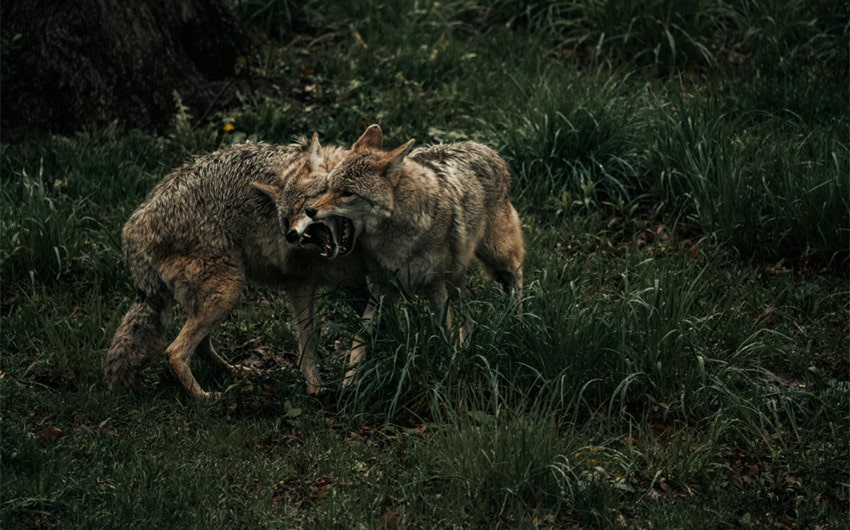
As highly adaptable and opportunistic hunters, coyotes pose a threat to grounded hawks, particularly if injured or nesting in low areas. While they cannot reach hawks in flight, coyotes may scavenge fallen or injured hawks and may also raid nests on the ground or low cliffs. Their opportunistic nature makes them a risk for vulnerable or compromised hawks.
2. Foxes
Known for their agility and stealth, foxes are adept at climbing and are capable of raiding hawk nests, particularly those located close to the ground. Foxes may consume hawk eggs or young nestlings, exploiting the limited defenses of young hawks and nest-bound mothers. Their opportunistic feeding habits make them regular threats to ground-nesting hawks.
3. Bobcats
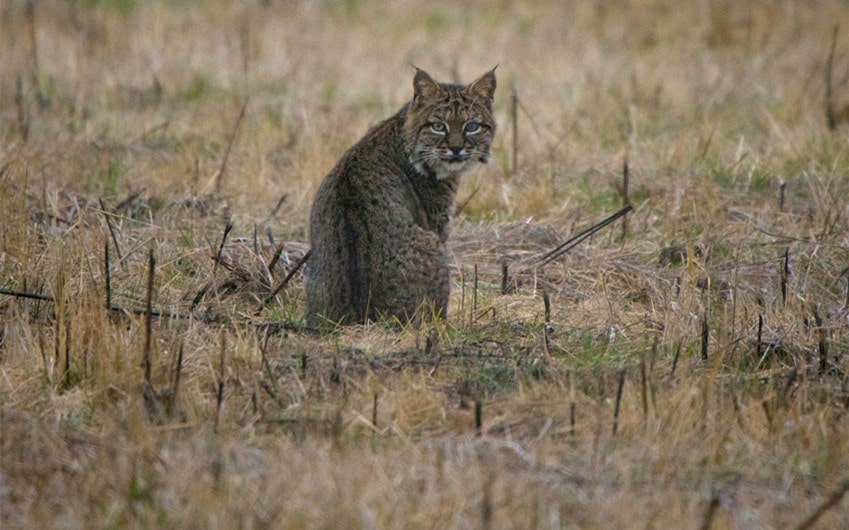
Stealthy and powerful, bobcats are skilled hunters and climbers, capable of reaching nests located in trees or on cliffs. They are known to target grounded hawks that may be injured or young. Bobcats also prey on fledgling hawks that have not yet developed the ability to evade threats effectively.
4. Raccoons
Raccoons are notorious nest raiders, capable of climbing trees to access hawk nests for eggs or young hawks. With their dexterous paws, raccoons are able to dismantle nests and consume eggs or even small birds. Their ability to climb and high adaptability make them common predators of hawk nests, especially in forested or suburban areas.
5. Martens
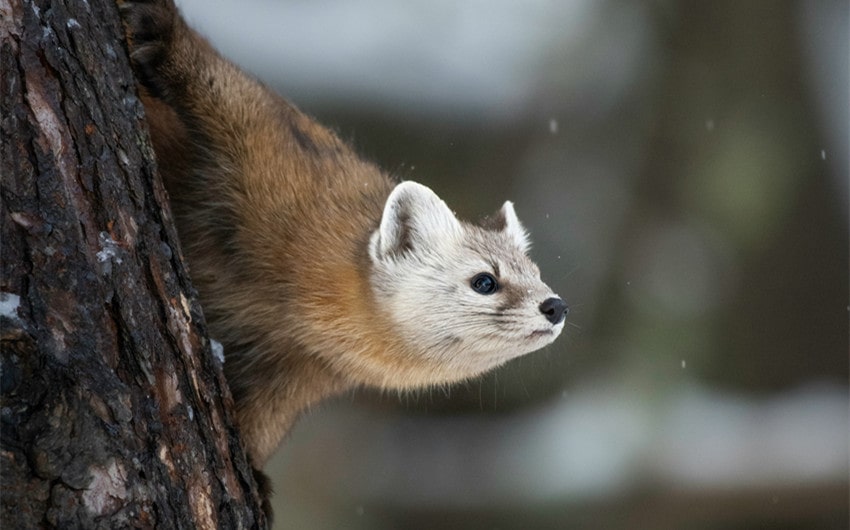
Found in forested regions, martens are agile and skilled climbers, often preying on bird nests when other food sources are scarce. These small yet formidable predators have been known to climb trees to access hawk nests, particularly targeting eggs and nestlings. Their opportunistic nature makes them a significant threat to nesting hawks in forested ecosystems.
Reptilian Predators
1. Rat Snakes
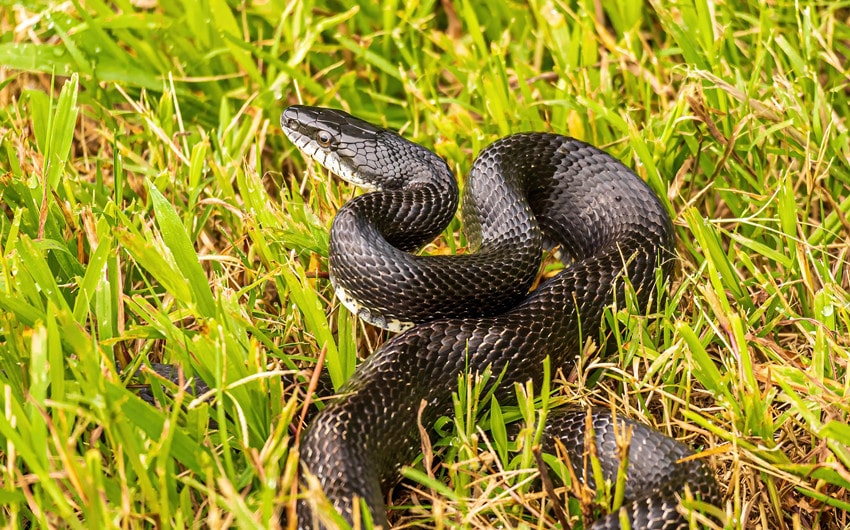
Known for their climbing ability, rat snakes often prey on bird nests, including those of hawks. They are particularly common in forested areas where hawks nest in trees. Rat snakes consume eggs and young hawks, exploiting their ability to reach elevated nests and their stealthy approach.
2. Bull Snakes
Like rat snakes, bull snakes are skilled climbers and frequently target bird nests. They can access nests close to the ground or on low branches, feeding on hawk eggs and nestlings. Their presence is particularly prevalent in open grasslands or prairies where they share habitats with ground-nesting hawks.
3. Alligators
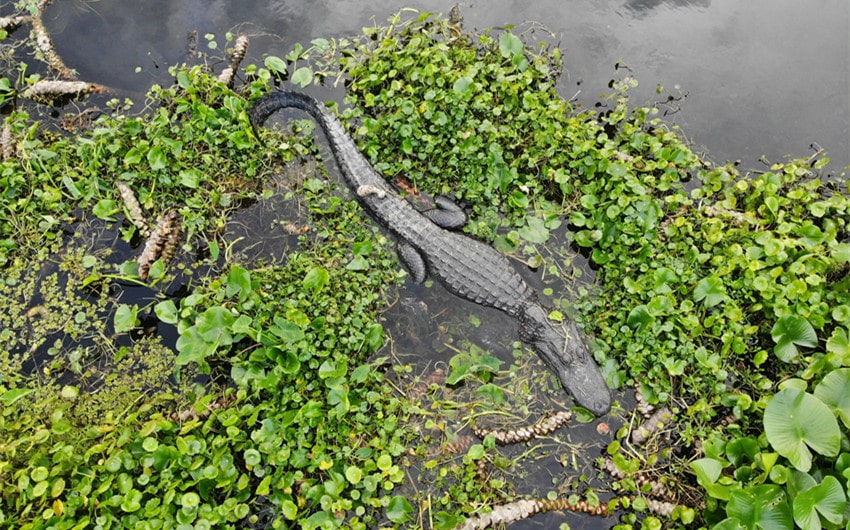
In wetland and swamp areas, hawks that hunt or nest near water are at risk of predation by alligators. These large reptiles may attack low-flying hawks or young hawks that come too close to the water’s edge. Alligators typically prey on hawks when they are distracted or focused on hunting, taking advantage of their proximity.
4. Monitor Lizards
In regions like Australia and Southeast Asia, monitor lizards pose a threat to ground-nesting birds, including hawks. Large monitors may consume hawk eggs and young birds if they encounter accessible nests. Their size and strength make them capable of preying on young or injured hawks that venture too close to the ground.
5. Water Moccasins
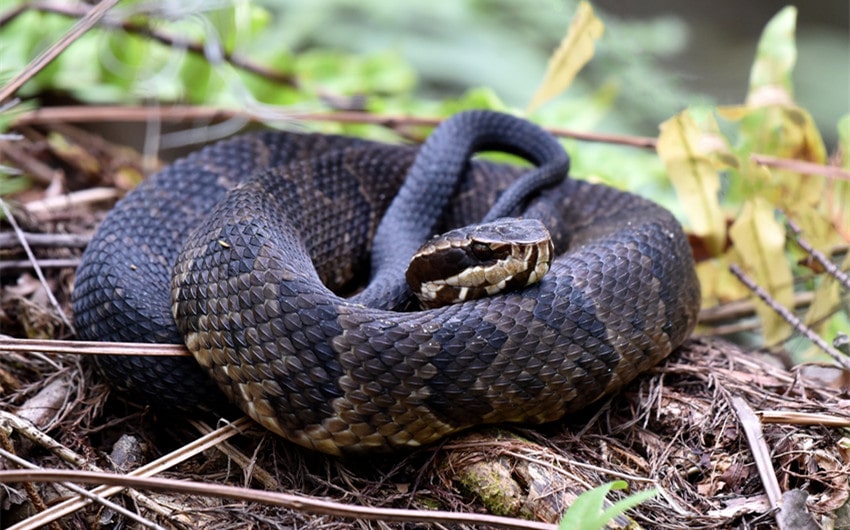
Common in swampy regions, water moccasins pose a threat to hawks nesting near wetlands or water sources. If a hawk’s nest is close to the ground, water moccasins may access it to prey on young hawks or eggs. These venomous snakes exploit the vulnerability of low-lying nests and pose a unique threat in such environments.

